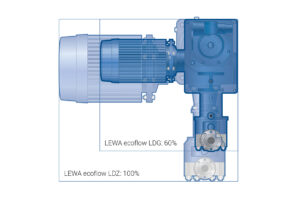Editorial: Use of Dosing Pumps Has Become Quite Prevalent in Several Industries
And, this is what that defines why these systems are utilized in overall processing industries across the globe. These systems are usually propelled by a small electricalengine or air actuator and are run by an extraneous system or mostly intramural pump regulator that modifies the flow rate. Thus, dosing pumps are also referred as metering pumps. Through the sheath attached to the piston, the reciprocating machine tends to fill and occupy the pump head in succession and this very technology is considered as pretty ideal for a detailed dosing.
Dosing pumps are highly supple and malleable in nature along with having an array of applications across several sectors including industrial, water treatment, and many more. When they are suitable for use in high temperatures, they also come out quire pertinent for high pressure applications. This is the reason why dosing pumps are often used to shoot up chemicals. There are industry dosing pumps that are available with added options such as foot regulators making them perfect for gauging a wide array of materials and products through a plethora of sectors.
Hose pumps, piston pumps, gear pumps, helical rotor pumps, and diaphragm pumps are the common positive displacement pumps utilized for dosing functions. The basic components of a dosing system take in the dosing pump, the supply tank, pressure relief use, the flow control tools, and the nozzle. Proper measurement of the quantity to be dosed can be pulled off by tapping the required amount into a regulated buffer chamber and draining it dry or by mounting a level sensor in the supply tank and managing the pump’s stop/start in mechanical order. Utilizing a flow meter to estimate the pump discharge is normally too imprecise for the small flows and amounts involved. The rolling and gushing flow from pump-action pumps, however, makes the perfect flow measurement quite unfeasible. Thus, it is important to take in a means to regulate the flow rate from the pump.
Dosing pumps are considered to be a seamless means at working with an array of fluids such as viscous, abrasive, and corrosive. It makes them ideal for application in several industries such as the minerals and mining industry. Industry performance can be heightened and enhanced with condensed and concentrated mechanical and hydraulic shockwaves.
According to Allied Market Research, the global dosing pumps market is expected to register a considerable CAGR from 2019 to 2026 (www.alliedmarketresearch.com/dosing-systems-market). In the last few years, there’s been significant innovation in the industrial manufacturing process. Consequently, organizations have started expending more in R&D to come up with better-quality dosing pumps to adhere to the stipulations of end users.
Rapid industrialization, high-end advancements in technology in manufacturing procedures, and increase in demand for wastewater treatment applications are the major factors driving the growth of the global dosing pumps market in more than one way. At the same time, surge in the production level of companies dealing with chemicals and pharmaceuticals and increasing support from several government bodies are expected to create multiple opportunities in the industry.
Here, it’s worth mentioning that the outbreak of the pandemic led to decreased demand for dosing pumps from several industry verticals, which in turn impacted the market negatively. However, with the rollout of mass vaccination in most countries, the global situation is expected to ameliorate soon, and the dosing market is also projected to get back to its previous track.
Author: Koyel Ghosh, Allied Market Research, India
Koyel Ghosh is a blogger with a strong passion and enjoys writing on miscellaneous domains, as she believes it lets her explore a wide variety of niches. She has an innate interest for creativity and enjoys experimenting with different writing styles. A writer who never stops imagining, she has been serving the corporate industry for the last four years.
Source: Allied Market Research (India)







